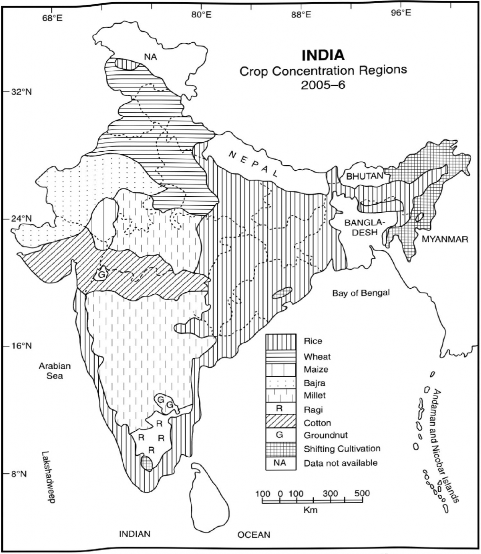The Location Quotient Method of Crop Concentration
In the location quotient technique, the regional character of distribution is investigated and determined, first by comparing the proportion of sown area under different crops and ranking them, and secondly, by retaining the crop density in each of the component areal units of the region/country to the corresponding density of the region/country as a whole. This approach makes it possible to measure the regional concentration of the crops objectively. It also helps to identify and differentiate areas that have some significance with regard to the crop distribution within the region.
The location quotient technique may be expressed as under:
Area of x crop in the / Area of x crop in the entire region/ component areal unit / country
Crop Concentration Index = —------------------- / -------------------------------
Area of all crops in the / Area of all crops in the entire component area unit / region/country
By adopting the above technique, if the index value is greater than unity, the component areal unit accounts for a share rather than it would have had if the distribution were uniform in the entire region, and, therefore, the areal unit has a concentration of greater significance. After ascertaining the index values for the crops in the component areal unit, they are arranged in an ascending or descending order. The index scale is calculated by dividing the array into three equal parts to distinguish the high, medium and low concentration. In general, higher the crop concentration index, higher is the level of interest in the production of that crop.
The main advantage of the location quotient technique for the demarcation of crop concentration lies in the fact that it enables the geographers and planners to understand the areas of specialisation of different crops grown in the region at a given point of time. The continuous cultivation of a particular crop in a unit or region, however, leads to progressive reduction in yield. This leads to the depletion of soil fertility as the particular crop exhausts certain nutrients from the soil. Rotation of crops with diverse choice in which leguminous crops are included needs to be practiced by the farmers. A scientific rotation of crops not only makes agriculture more remunerative and dignified occupation, it also makes the agro-ecosystem more resilient and sustainable.

